 Sesame is a promising new crop for Florida, but few herbicides have been registered for it as yet. This 2-page fact sheet provides weed-control strategies for sesame. Written by Jason Ferrell and Ramon Leon, and published by the UF Department of Agronomy, June 2015. (Photo credit: Doug Mayo)
Sesame is a promising new crop for Florida, but few herbicides have been registered for it as yet. This 2-page fact sheet provides weed-control strategies for sesame. Written by Jason Ferrell and Ramon Leon, and published by the UF Department of Agronomy, June 2015. (Photo credit: Doug Mayo)
http://edis.ifas.ufl.edu/ag396
Tag: Jason A. Ferrell
Biochar Effects on Weed Management
 Biochar can potentially provide better conditions in the soil to increase plant growth. However, research has shown that weed species show minimal changes in germination and emergence patterns with the addition of biochar. Regardless, if biochar is used in the field it is important to monitor for changes in weed populations. This is especially important because biochar can decrease herbicide efficacy. This 2-page fact sheet was written by Neeta Soni, Ramon G. Leon, John E. Erickson, and Jason A. Ferrell, and published by the UF Department of Agronomy, March 2015. (Photo: Neeta Soni)
Biochar can potentially provide better conditions in the soil to increase plant growth. However, research has shown that weed species show minimal changes in germination and emergence patterns with the addition of biochar. Regardless, if biochar is used in the field it is important to monitor for changes in weed populations. This is especially important because biochar can decrease herbicide efficacy. This 2-page fact sheet was written by Neeta Soni, Ramon G. Leon, John E. Erickson, and Jason A. Ferrell, and published by the UF Department of Agronomy, March 2015. (Photo: Neeta Soni)
http://edis.ifas.ufl.edu/ag390
Hairy Indigo Control in Peanut
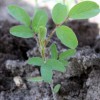 Hairy indigo is an annual legume that was introduced to Florida as a forage crop. It has since escaped cultivation and can be a troublesome weed in some crop settings, particularly in peanut production, since we are attempting to control a legume weed in a legume crop. This 2-page fact sheet was written by Jason Ferrell, Blaire Colvin, and Ramon Leon, and published by the UF Department of Agronomy, March 2015. (Photo by Blaire Colvin, UF/IFAS)
Hairy indigo is an annual legume that was introduced to Florida as a forage crop. It has since escaped cultivation and can be a troublesome weed in some crop settings, particularly in peanut production, since we are attempting to control a legume weed in a legume crop. This 2-page fact sheet was written by Jason Ferrell, Blaire Colvin, and Ramon Leon, and published by the UF Department of Agronomy, March 2015. (Photo by Blaire Colvin, UF/IFAS)
http://edis.ifas.ufl.edu/ag391
Smutgrass Control in Perennial Grass Pastures
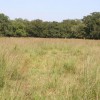 Smutgrass is a serious weed of improved perennial grass pastures, roadsides, natural areas, and waste areas in Florida. A 2003 survey found that smutgrass was second only to tropical soda apple as the most problematic weed species in Florida pastures, but now that practices to control tropical soda apple have been widely adopted in Florida, smutgrass is likely the most problematic weed species in Florida pastures today. This 4-page fact sheet was written by Brent Sellers, J. A. Ferrell, and N. Rana, and published by the UF Department of Agronomy, January 2015. (Photo Credit: B. Sellers, UF/IFAS)
Smutgrass is a serious weed of improved perennial grass pastures, roadsides, natural areas, and waste areas in Florida. A 2003 survey found that smutgrass was second only to tropical soda apple as the most problematic weed species in Florida pastures, but now that practices to control tropical soda apple have been widely adopted in Florida, smutgrass is likely the most problematic weed species in Florida pastures today. This 4-page fact sheet was written by Brent Sellers, J. A. Ferrell, and N. Rana, and published by the UF Department of Agronomy, January 2015. (Photo Credit: B. Sellers, UF/IFAS)
http://edis.ifas.ufl.edu/aa261
Managing Against the Development of Herbicide-Resistant Weeds: Sugarcane
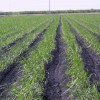 Profitable sugarcane production in Florida requires effective weed management. Herbicides provide an efficient and cost-effective means of weed control, but excessive use of a single herbicide or group of herbicides with the same mechanism of action has resulted in the development of herbicide-resistant weeds. In crops such as sugarcane where a limited number of herbicides are registered, the loss of a single effective herbicide can be very costly. Thus, it is critical to manage herbicides in order to prevent or delay the development of herbicide-resistant weed populations. This 4-page fact sheet lists herbicides by group number, mechanism of action, chemical family, common name, and trade name. Written by D.C. Odero, B.A. Sellers, J.A. Ferrell, and G.E. MacDonald, and published by the UF Department of Agronomy, October 2014.
Profitable sugarcane production in Florida requires effective weed management. Herbicides provide an efficient and cost-effective means of weed control, but excessive use of a single herbicide or group of herbicides with the same mechanism of action has resulted in the development of herbicide-resistant weeds. In crops such as sugarcane where a limited number of herbicides are registered, the loss of a single effective herbicide can be very costly. Thus, it is critical to manage herbicides in order to prevent or delay the development of herbicide-resistant weed populations. This 4-page fact sheet lists herbicides by group number, mechanism of action, chemical family, common name, and trade name. Written by D.C. Odero, B.A. Sellers, J.A. Ferrell, and G.E. MacDonald, and published by the UF Department of Agronomy, October 2014.
http://edis.ifas.ufl.edu/sc077
Bermudagrass Stem Maggot: A New Pest in Florida
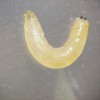 Bermudagrass is a dominant hay crop in Florida. Now, hay producers are facing a new emerging pest problem in bermudagrass and stargrass production fields. The bermudagrass stem maggot, is a new exotic invasive fly. It was first discovered damaging bermudagrass pasture and hay fields in Georgia. The identification of the fly was the first record of this species in North America, and it has the potential to become a serious pest of bermudagrass and stargrass in Florida. This 2-page fact sheet was written by Ann Blount, Tim Wilson, Jay Ferrell, Russ Mizell, and Jonael Bosques, and published by the UF Department of Agronomy, June 2014.
Bermudagrass is a dominant hay crop in Florida. Now, hay producers are facing a new emerging pest problem in bermudagrass and stargrass production fields. The bermudagrass stem maggot, is a new exotic invasive fly. It was first discovered damaging bermudagrass pasture and hay fields in Georgia. The identification of the fly was the first record of this species in North America, and it has the potential to become a serious pest of bermudagrass and stargrass in Florida. This 2-page fact sheet was written by Ann Blount, Tim Wilson, Jay Ferrell, Russ Mizell, and Jonael Bosques, and published by the UF Department of Agronomy, June 2014.
http://edis.ifas.ufl.edu/ag384
Identification and Control of Coral Ardisia (Ardisia crenata): A Potentially Poisonous Plant.
 Coral ardisia, also known as coral berry, spice berry, and scratchthroat, was introduced to Florida in the early 1900’s for ornamental purposes. Since then, it has escaped cultivation, and it is found in hardwood hammocks and other moist, natural-wooded areas and grazing lands. Although there is no published literature supporting the theory that coral ardisia is toxic, it is suspected that the berries and/or foliage are poisonous to livestock, pets, and humans. This 3-page fact sheet was written by B. A. Sellers, Sarah Lancaster, K. A. Langeland, J.A. Ferrell, Michael Meisenberg, and J. Walter, and published by the UF Department of Agronomy, November 2013.
Coral ardisia, also known as coral berry, spice berry, and scratchthroat, was introduced to Florida in the early 1900’s for ornamental purposes. Since then, it has escaped cultivation, and it is found in hardwood hammocks and other moist, natural-wooded areas and grazing lands. Although there is no published literature supporting the theory that coral ardisia is toxic, it is suspected that the berries and/or foliage are poisonous to livestock, pets, and humans. This 3-page fact sheet was written by B. A. Sellers, Sarah Lancaster, K. A. Langeland, J.A. Ferrell, Michael Meisenberg, and J. Walter, and published by the UF Department of Agronomy, November 2013.
http://edis.ifas.ufl.edu/ag281
Diagnosing Herbicide Injury in Corn (SSAGR365/AG374)
 This 9-page fact sheet lists nine modes of action: the mechanism of action, behavior in plants, symptoms and herbicides, and illustrations. Written by Sarah Berger, Jason Ferrell, and Peter Dittmar, and published by the UF Department of Agronomy, January 2013.
This 9-page fact sheet lists nine modes of action: the mechanism of action, behavior in plants, symptoms and herbicides, and illustrations. Written by Sarah Berger, Jason Ferrell, and Peter Dittmar, and published by the UF Department of Agronomy, January 2013.
http://edis.ifas.ufl.edu/ag374
Identification and Control of Southern Sandbur (Cenchrus echinatus L.) in Hayfields (SSAGR364/AG373)
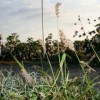 Southern sandbur is an annual grass that grows in pastures and cropland throughout the warm areas of the southern United States from Virginia to California. This native grass is adapted to dry, sandy soils and has a shallow, fibrous root system. It can easily invade a poorly managed field, diminishing the quality of a hay crop or grazing pasture. Southern sandbur seeds start to germinate in late spring, and germination continues through the summer and fall. Flowering occurs in late fall, and growth is consistent until the first frost. This 2-page fact sheet was written by Hunter Smith, Jason Ferrell, and Brent Sellers, and published by the UF Department of Agronomy, December 2012.
Southern sandbur is an annual grass that grows in pastures and cropland throughout the warm areas of the southern United States from Virginia to California. This native grass is adapted to dry, sandy soils and has a shallow, fibrous root system. It can easily invade a poorly managed field, diminishing the quality of a hay crop or grazing pasture. Southern sandbur seeds start to germinate in late spring, and germination continues through the summer and fall. Flowering occurs in late fall, and growth is consistent until the first frost. This 2-page fact sheet was written by Hunter Smith, Jason Ferrell, and Brent Sellers, and published by the UF Department of Agronomy, December 2012.
http://edis.ifas.ufl.edu/ag373
Cogongrass (Imperata cylindrica) Biology, Ecology, and Management in Florida Grazing Lands (SSAGR52/WG202)
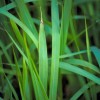 Cogongrass is found on every continent and is considered a weedy pest in 73 countries. In the U.S., cogongrass is found primarily in the Southeast. It was accidentally introduced into Alabama in the early 1900s, and purposely introduced as a potential forage and soil stabilizer in Florida (and other states) in the 1930s and early 1940s. However, soon after investigations began it was realized that cogongrass could be a weedy pest. Since its introduction, cogongrass has spread to nearly every county in Florida. In some cases, it has completely taken over pastures so that it is the only species present. This is a common thread where cogongrass invades; it quickly displaces desirable species and requires intensive management. This 5-page fact sheet was written by B. A. Sellers, J. A. Ferrell, G. E. MacDonald, K. A. Langeland, and S. L. Flory, and published by the UF Department of Agronomy, August 2012.
Cogongrass is found on every continent and is considered a weedy pest in 73 countries. In the U.S., cogongrass is found primarily in the Southeast. It was accidentally introduced into Alabama in the early 1900s, and purposely introduced as a potential forage and soil stabilizer in Florida (and other states) in the 1930s and early 1940s. However, soon after investigations began it was realized that cogongrass could be a weedy pest. Since its introduction, cogongrass has spread to nearly every county in Florida. In some cases, it has completely taken over pastures so that it is the only species present. This is a common thread where cogongrass invades; it quickly displaces desirable species and requires intensive management. This 5-page fact sheet was written by B. A. Sellers, J. A. Ferrell, G. E. MacDonald, K. A. Langeland, and S. L. Flory, and published by the UF Department of Agronomy, August 2012.
http://edis.ifas.ufl.edu/wg202
Identification and Control of Johnsongrass, Vaseygrass, and Guinea Grass in Pastures (SSAGR363/AG372)
 Johnsongrass is a common weed throughout the South and Midwest. People often incorrectly call any weed johnsongrass, but it is one of three grasses found in Florida pastures. Knowing the differences between johnsongrass, vaseygrass, and guinea grass will help with proper weed management. This 3-page fact sheet was written by H. Smith, J. Ferrell, and B. Sellers, and published by the UF Agronomy Department, August 2012. http://edis.ifas.ufl.edu/ag372
Johnsongrass is a common weed throughout the South and Midwest. People often incorrectly call any weed johnsongrass, but it is one of three grasses found in Florida pastures. Knowing the differences between johnsongrass, vaseygrass, and guinea grass will help with proper weed management. This 3-page fact sheet was written by H. Smith, J. Ferrell, and B. Sellers, and published by the UF Agronomy Department, August 2012. http://edis.ifas.ufl.edu/ag372
Diagnosing Herbicide Injury in Cotton (SSAGR358/AG367)
This 10-page fact sheet aids in the diagnosis of herbicide injury by providing pictures and descriptions of behavior in plants and symptoms associated with different herbicides organized by mode of action. Written by Sarah Berger and Jason Ferrell, and published by the UF Department of Agronomy, February 2012.
http://edis.ifas.ufl.edu/ag367
Control of Lantana in Pastures (SSAGR359/AG368)
Lantana is currently one of the top 10 most troublesome weeds in Florida. Although it is still sold as an ornamental, commercial varieties are sterile and considered to be non-invasive. It can quickly invade disturbed sites by producing plant toxins in its roots and stems, that either slow the growth of other plants or totally remove them. These leaf toxins are damaging to grazing animals. If animals consume the leaves, they often begin to show symptoms of skin peeling or cracking. Once animals show these symptoms, there is little or no treatment that can reverse the process. Although lantana’s leaves are poisonous, its berries are not. Birds readily consume the fruit and disperse the seed. This 2-page fact sheet was written by J. Ferrell, B. Sellers, and E. Jennings, and published by the UF Department of Agronomy, February 2012.
http://edis.ifas.ufl.edu/ag368
Bracken Fern Control in Pastures (SSAGR357/AG366)
 Bracken fern is a poisonous plant common along tree lines, in forest openings, and around building borders. Animals will consum it when adequate forage is not available. Learn more in this 2-page fact sheet was written by J. Ferrell, B. Sellers, and T. Wilson , and published by the UF Department of Agronomy, December 2011.
Bracken fern is a poisonous plant common along tree lines, in forest openings, and around building borders. Animals will consum it when adequate forage is not available. Learn more in this 2-page fact sheet was written by J. Ferrell, B. Sellers, and T. Wilson , and published by the UF Department of Agronomy, December 2011.
http://edis.ifas.ufl.edu/ag366
Production of Giant Reed for Biofuel (SSAGR318/AG327)
 Giant reed is currently being evaluated as a potential biomass energy crop in Florida, even though some scientists and those in other states consider it to be a noxious or invasive weed. This 4-page fact sheet discusses the adaptation and production of giant reed as a potential energy crop and presents measures for controlling giant reed as an escaped weed. It does not give specific recommendations on whether it is better to control giant reed or produce it for biofuel. Written by Dennis Odero, Robert Gilbert, Jason Ferrell, and Zane Helsel, and published by the UF Department of Agronomy, November 2011.
Giant reed is currently being evaluated as a potential biomass energy crop in Florida, even though some scientists and those in other states consider it to be a noxious or invasive weed. This 4-page fact sheet discusses the adaptation and production of giant reed as a potential energy crop and presents measures for controlling giant reed as an escaped weed. It does not give specific recommendations on whether it is better to control giant reed or produce it for biofuel. Written by Dennis Odero, Robert Gilbert, Jason Ferrell, and Zane Helsel, and published by the UF Department of Agronomy, November 2011.
http://edis.ifas.ufl.edu/ag327
Prickly Pear Cactus Control in Pastures (SSAGR354/AG363)
 Prickly pear cactus is not a problem in every pasture in Florida, but where it is found, it is often the biggest and most difficult issue to manage: mowing prickly pear fragments the pads and dramatically increases the infestation, and although prickly pear doesn’t form dense canopies and doesn’t outcompete desirable forage grasses, its impact on grazing can be just as severe because of its barbed quills. This 2-page fact sheet was written by J. A. Ferrell and B. A. Sellers, and published by the UF Department of Agronomy, September 2011.
Prickly pear cactus is not a problem in every pasture in Florida, but where it is found, it is often the biggest and most difficult issue to manage: mowing prickly pear fragments the pads and dramatically increases the infestation, and although prickly pear doesn’t form dense canopies and doesn’t outcompete desirable forage grasses, its impact on grazing can be just as severe because of its barbed quills. This 2-page fact sheet was written by J. A. Ferrell and B. A. Sellers, and published by the UF Department of Agronomy, September 2011.
http://edis.ifas.ufl.edu/ag363
Flat-top Goldenrod (Euthamia caroliniana): Biology and Control in Pastures (SS-AGR-353/AG361)
 This perennial plant, which flowers September – November with flat-topped inflorescence consisting of many yellow ray and disk flowers, is a common weed found in pastures with low levels of management. Learn more in this 3-page fact sheet was written by B. A. Sellers and J. A. Ferrell and published by the UF Department of Agronomy, September 2011.
This perennial plant, which flowers September – November with flat-topped inflorescence consisting of many yellow ray and disk flowers, is a common weed found in pastures with low levels of management. Learn more in this 3-page fact sheet was written by B. A. Sellers and J. A. Ferrell and published by the UF Department of Agronomy, September 2011.
http://edis.ifas.ufl.edu/ag361
Dogfennel (Eupatorium capillifolium): Biology and Control (SSAGR224/AG233)
 Dogfennel is currently the number one most commonly occurring pasture weed in Florida. Many people think it is only unsightly, but it causes significant bahiagrass yield loss and can cause dehydration when ingested by cattle. This 3-page fact sheet was written by B. A. Sellers and J. A. Ferrell and published by the UF Department of Agronomy, September 2011.
Dogfennel is currently the number one most commonly occurring pasture weed in Florida. Many people think it is only unsightly, but it causes significant bahiagrass yield loss and can cause dehydration when ingested by cattle. This 3-page fact sheet was written by B. A. Sellers and J. A. Ferrell and published by the UF Department of Agronomy, September 2011.
http://edis.ifas.ufl.edu/ag233
Saw Palmetto Control: Individual Plant and Broadcast Application (SSAGR341/AG351)
Saw palmetto is a shrubby palm species native to Florida and common throughout the state. Despite its beneficial uses, saw palmetto is a serious weed problem in pastures, forests, and non-cropland areas, and control of this common native plant is often necessary. This 4-page fact sheet provides mechanical and chemical control recommendations. Written by Brandon Fast, Jason Ferrell, and Brent Sellers, and published by the UF Department of Agronomy, March 2011.
http://edis.ifas.ufl.edu/ag351
Biology and Control of Common Ragweed Along Ditch and Canal Banks (SSAGR346/AG356)
Common ragweed is a successful pioneer species widely distributed throughout the continental United States. In cultivated fields it will compete with crops for light, moisture, nutrients, and space and will result in significant yield losses. Additionally, allergenic airborne pollen from common ragweed is a primary cause of hay fever and thus a public health concern. This 3-page fact sheet describes the life cycle of the plant and provides management recommendations. Written by D.C. Odero, B. Sellers, and J. Ferrell, and published by the UF Department of Agronomy, April 2011.
http://edis.ifas.ufl.edu/ag356